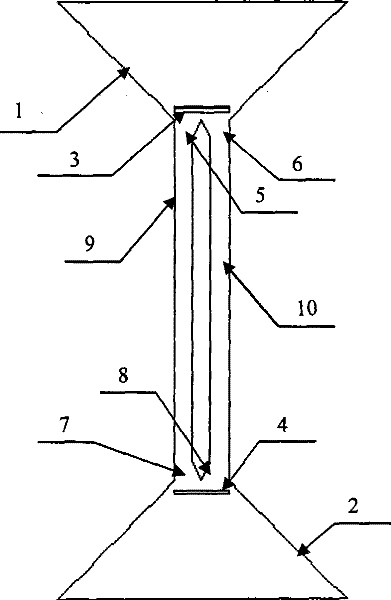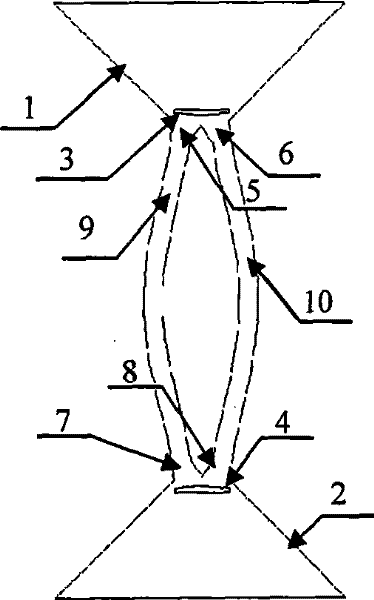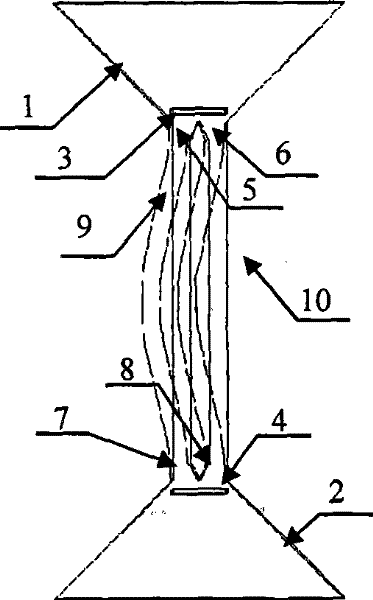Resonant tuning fork structure having strong self-coupling performance
A self-coupling and tuning fork technology, applied in the field of core sensitive components, can solve problems such as vibration amplitude modulation, unfavorable signal processing of resonant tuning forks, and affecting the vibration effect of tuning forks, so as to strengthen vibration coupling, reduce equivalent stiffness, and increase equivalent stiffness Effect
- Summary
- Abstract
- Description
- Claims
- Application Information
AI Technical Summary
Problems solved by technology
Method used
Image
Examples
Embodiment Construction
[0011] Such as figure 1 As shown, the present invention includes a symmetrical upper trapezoidal base 1 and a lower trapezoidal base 2 that are used for tuning forks to be fixedly connected with the surrounding two triangles. The upper vibration isolation hole 3 in the upper trapezoidal base 1 and the lower The lower vibration isolation hole 4 in the trapezoidal base 2, the upper vibration isolation hole 3 and the lower vibration isolation hole 4 are symmetrical; the left and right two symmetrical upper resonant beam support bases 5, 6 are rigidly connected with the short side of the trapezoidal base 1, The left and right two symmetrical lower resonant beam support bases 7, 8 are rigidly connected to the short side of the trapezoidal base 2, and the left and right symmetrical resonant beams 9, 10 are located in the middle of the entire tuning fork structure, forming a resonant tuning fork, and passing through the left and right two The upper resonant beam support base 5, 6 and...
PUM
 Login to View More
Login to View More Abstract
Description
Claims
Application Information
 Login to View More
Login to View More - R&D
- Intellectual Property
- Life Sciences
- Materials
- Tech Scout
- Unparalleled Data Quality
- Higher Quality Content
- 60% Fewer Hallucinations
Browse by: Latest US Patents, China's latest patents, Technical Efficacy Thesaurus, Application Domain, Technology Topic, Popular Technical Reports.
© 2025 PatSnap. All rights reserved.Legal|Privacy policy|Modern Slavery Act Transparency Statement|Sitemap|About US| Contact US: help@patsnap.com



